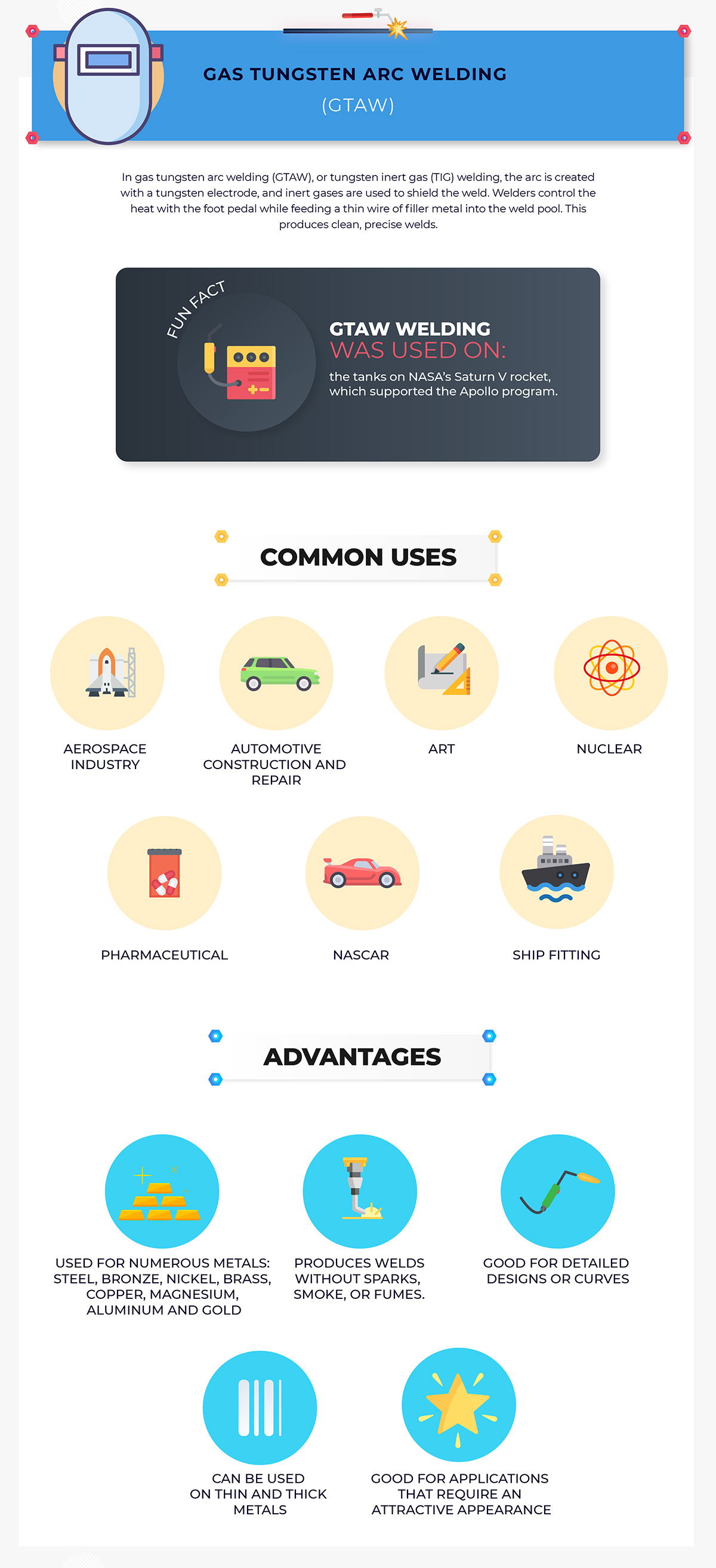TWS is a Great Training Option for Everyone
Learn more about how we can prepare you to advance your career.
Among the numerous different types of welding processes available today, gas tungsten arc welding, or GTAW, is generally considered the most challenging welding method to master. Although it is more time consuming than other welding methods, even when practiced with the care of an expert, the improved strength and quality of welds produced with GTAW can offer a practical alternative to simpler welding methods, particularly for narrow sections of stainless steel and non-ferrous metals such as copper, aluminum, and magnesium alloys.
One of the first industrial applications for GTAW welding began within the aerospace industry. Current fields where GTAW skills are most in demand include the shipfitting trade, as aluminum welding plays an important role in the construction of a ship’s superstructure, and the manufacturing and repair of bicycles.
How Does the GTAW Process Work?
GTAW, also known as tungsten inert gas (TIG) welding, is a type of arc welding which produces the weld using a non-consumable tungsten electrode. Inert gases such as argon or helium are used to protect the area being welded from contamination and most, although not all, welding applications will require filler metal. A column of plasma, made up of highly ionized gas and metal vapors, conducts energy across the arc and is produced by a constant-current welding power supply.
Unlike simpler welding methods which produce slag, or chips of metal that tend to chip off of the welds, GTAW is a much “cleaner” method of welding useful in situations requiring no welding slag, such as applications where a neat and attractive appearance is critical.
Have You Considered a Career in the Skilled Trades?
Fill out the form to recieve a no obligation info packet.
With GTAW, the welder must maintain a very short arc length while preventing contact between the electrode and the work itself, requiring a great deal of training, skill and care. Two hands are usually required with GTAW, as one hand will be operating the welding torch while the other hand feeds the filler metal into the weld being created. Autogenous or fusion welds do not require filler metals and can be completed in cases such as edge, corner and butt joints combining thin materials.
GTAW Common Uses and Advantages

GTAW Units Come in a Range of Sizes and Price Ranges
Different specialty industries require the application of GTAW welds in a wide variety of sizes. In addition, different size GTAW welding machines, ranging from smaller portable units which draw a minimum of 8 kW to large industrial scale GTAW models which require a full 30 kw of power will be amongst your work tools at many job sites where this extremely strong, clean GTAW welding method is used. These welding systems can also be altered to function properly with the use of a portable engine power source, such as a powerful generator or other portable and powerful energy source.
Tulsa Welding School (TSW) Can Help You Get Started
Whether you have just graduated high school, recently completed military service, or are considering a GED program in preparation to enter a skilled trade training course, talking with a representative at Tulsa Welding School can help you gain clarity and focus in regards to making an important career move. With campuses in Tulsa, OK, Jacksonville, FL and Houston, TX offering training courses for entry level careers in welding, pipefitting, HVAC/R and more, you will be able to prepare for a well paying and rewarding career without spending years sitting and studying behind a desk. Give us a call today to learn more about the programs available to young adults in the Tulsa, Jacksonville, and Houston areas!
This blog has been labeled as archived as it may no longer contain the most up-to-date data. For a list of all current blog posts, please visit our blog homepage at https://www.tws.edu/blog/







